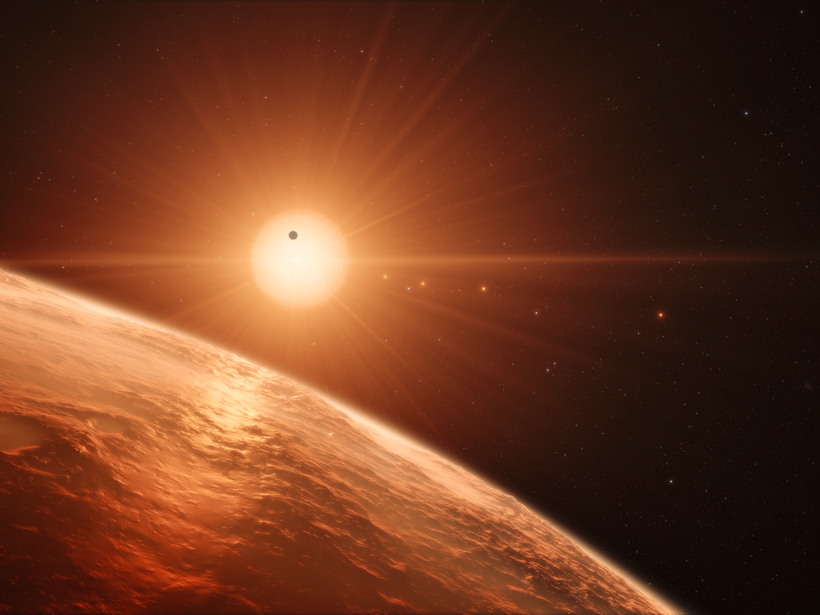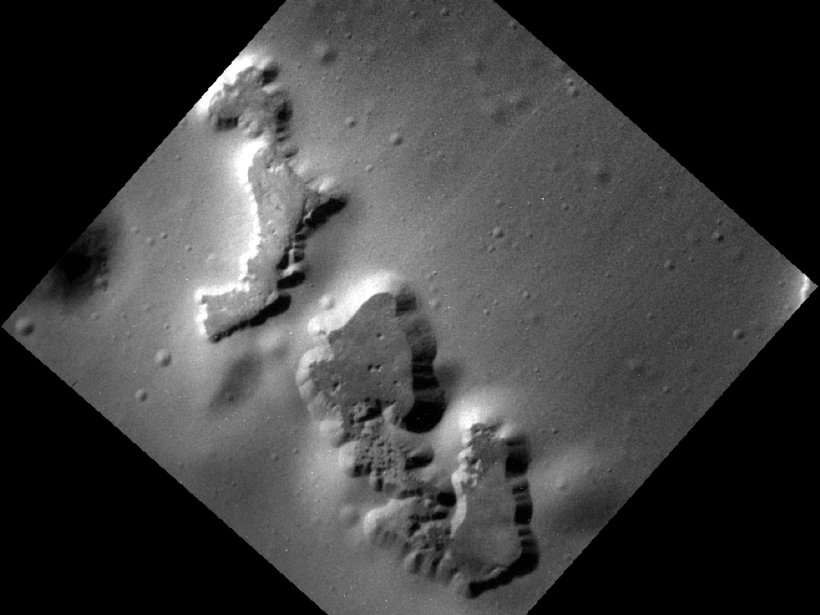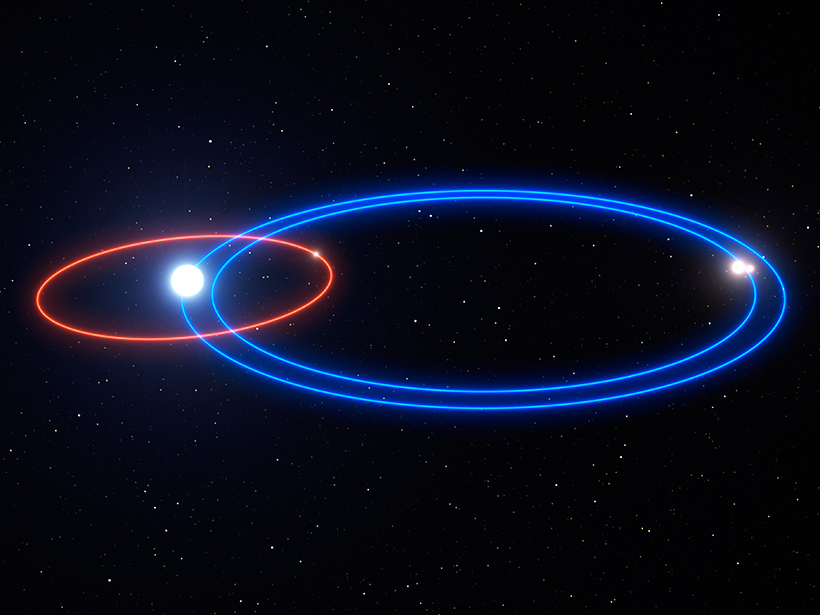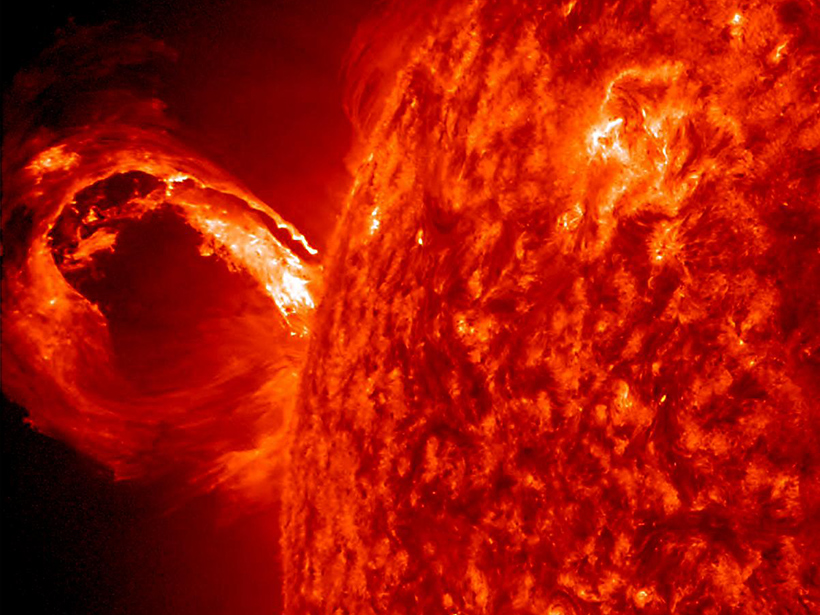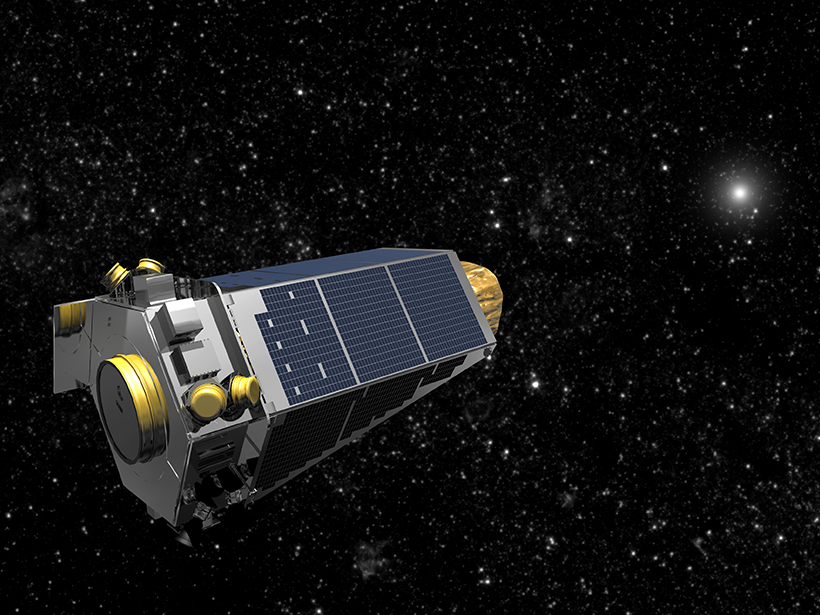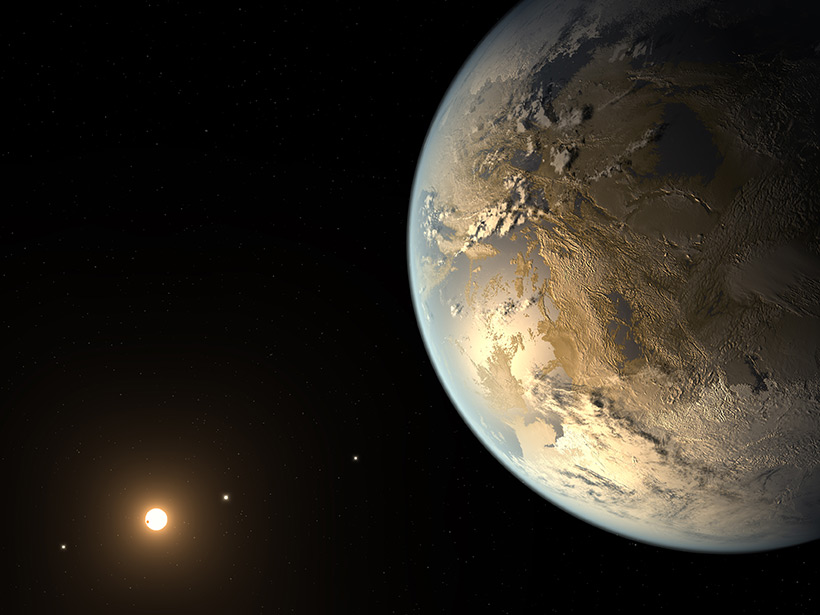The proposed formation scenario relies on unconventional processes to account for a bevy of seven Earth-sized exoplanets recently found orbiting an unlikely star.
planetary evolution
Seven Earth-Sized Planets Seen Whizzing Around One Cool Star
Although all the exoplanets orbit closer than Mercury does to our Sun, liquid water may persist on some of them because their star radiates so little heat.
Unprecedented Views of Mercury Constrain Hollow Formation
The consistently shallow depths of the depressions scattered across Mercury's surface suggest their morphology is not determined by the thickness of a volatile-rich outer layer.
Mars’s Climate May Have Been Wet Much Later Than Thought
Water-carved valleys may be relatively young, challenging assumptions about the history of the Red Planet's climate.
Minerals Hint at Liquid Groundwater, More Oxygen in Mars's Past
Manganese deposits in Gale Crater fractures are similar to Earth features that usually require flowing water and highly oxidizing conditions.
New-Found Dwarf Planet Points to Solar System's Chaotic Past
Astronomers have discovered an icy ball in the dark and frigid regions of the outer solar system, which they suspect harbors secrets to the solar system's formation and evolution.
Exoplanet Found in Curious Triple-Star System
The newly discovered planet balances precariously in orbit within the star system, puzzling scientists.
Did Solar Flares Cook Up Life on Earth?
Scientists have found that "super" solar flares could have warmed the ancient planet and jump-started life.
Largest Haul of Newly Verified Exoplanets Announced
About 550 of the planets could be rocky like the Earth, and nine of the planets orbit within their star's habitable zone.
Becoming Habitable in the Habitable Zone
Scientists explore how interactions between a rocky planet's climate, mantle, and core can affect its evolution and determine whether it could sustain life.

